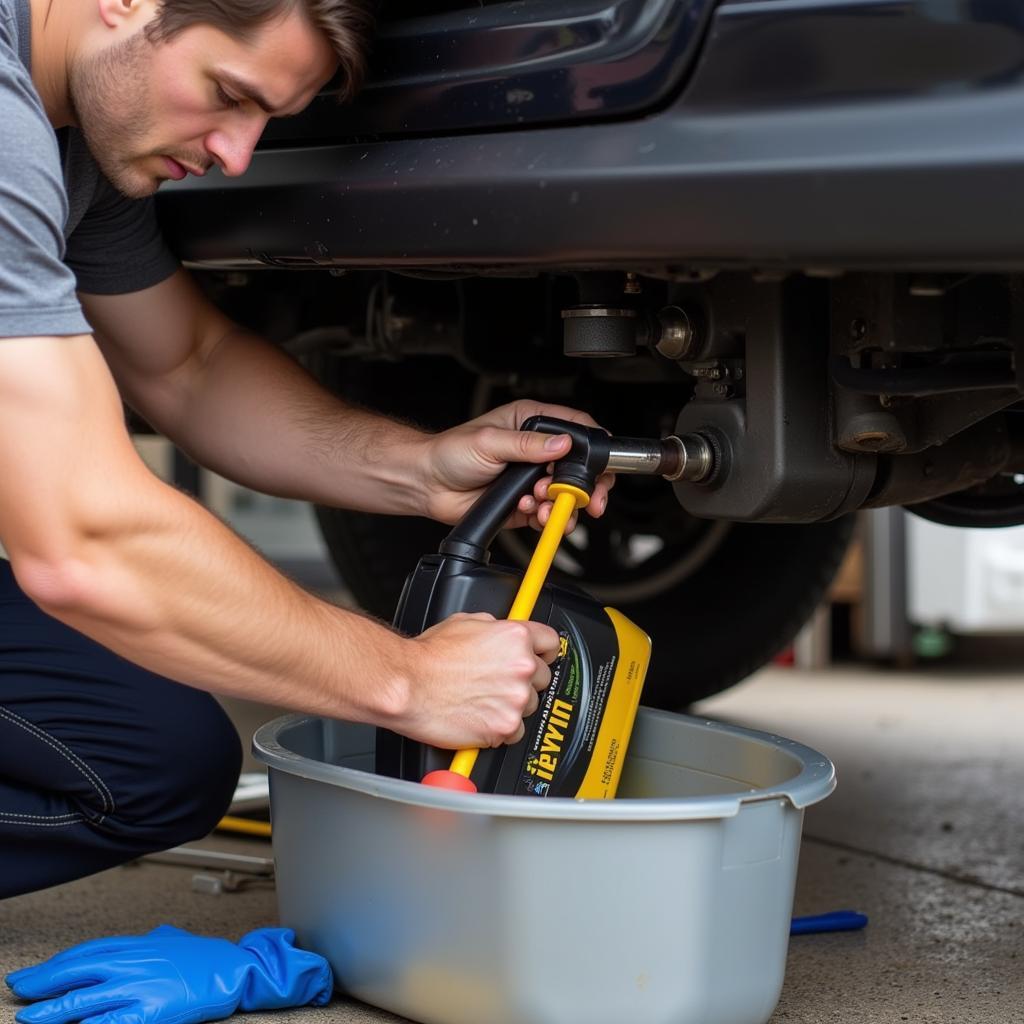Car Maintenance Guides are crucial for keeping your vehicle running smoothly and preventing costly repairs down the road. Whether you’re a seasoned mechanic or a new car owner, understanding the basics of car maintenance can save you time, money, and headaches. This comprehensive guide will cover everything from routine checks to more advanced maintenance procedures, empowering you to take control of your car’s health.
Scheduled maintenance for cars isn’t something to be taken lightly. Regular maintenance ensures optimal performance, improves fuel efficiency, and enhances safety. By following a consistent maintenance schedule, you can identify potential problems early on and avoid major breakdowns. A well-maintained car also holds its value better, making it a worthwhile investment in the long run. Let’s dive into the essential aspects of car maintenance.
Shortly after buying your car, you should familiarize yourself with the specific maintenance schedule recommended by the manufacturer in your owner’s manual. This schedule outlines the specific services and inspections needed at different mileage intervals, tailored to your car’s make and model. Sticking to this schedule is the best way to keep your warranty valid and ensure your car stays in top shape. For instance, you might find helpful information like ford cars scheduled maintenance guides for 2000 model year online.
 Checking Tire Pressure with a Gauge
Checking Tire Pressure with a Gauge
Understanding Your Car’s Vital Fluids
Your car relies on various fluids to function correctly. Regularly checking and changing these fluids is essential for maintaining its health. Engine oil lubricates the engine’s moving parts, reducing friction and wear. Coolant prevents the engine from overheating, while brake fluid transmits the force from your foot to the brakes. Power steering fluid makes steering effortless, and transmission fluid ensures smooth gear changes. Ignoring these fluids can lead to serious damage and costly repairs.
Checking Your Engine Oil
Checking your engine oil is a simple yet vital task. Park your car on a level surface, turn off the engine, and wait a few minutes for the oil to settle. Locate the dipstick, pull it out, wipe it clean, and reinsert it fully. Pull it out again and check the oil level. The oil should be within the designated marks on the dipstick. If it’s low, top it off with the recommended oil type. Regular oil changes, as specified in your car maintenance guides, are essential for optimal engine performance.
 Changing Engine Oil in a Car
Changing Engine Oil in a Car
Why Routine Inspections Matter
Routine inspections are a cornerstone of effective car maintenance. They allow you to catch potential problems early on, before they escalate into major issues. Regularly inspecting your tires, brakes, lights, and other components can help prevent accidents and ensure your safety on the road.
Inspecting Your Tires
Tires play a crucial role in your car’s handling and safety. Regularly check your tire pressure using a gauge. Underinflated tires can reduce fuel efficiency and increase the risk of blowouts, while overinflated tires can lead to uneven wear. Also, inspect your tires for signs of damage, such as cuts, bulges, or uneven wear. Rotate your tires every 5,000-7,000 miles to ensure even wear. If you are looking for a low price of car maintenance, consider learning how to do some of these checks yourself.
“Regular tire inspections are often overlooked, but they are crucial for safety and performance,” says John Davis, a certified automotive technician with 20 years of experience. “A simple tire pressure check can significantly improve fuel economy and prevent dangerous blowouts.”
Addressing Common Car Problems
Even with diligent maintenance, cars can experience problems. Understanding some common issues can help you troubleshoot and address them effectively. From a dead battery to a flat tire, knowing how to handle these situations can save you time and money. Consider using a car services and maintenance compare app to find reputable mechanics in your area.
Troubleshooting a Dead Battery
A dead battery is a common car problem, often caused by leaving lights on or a faulty alternator. If your car won’t start, check the battery terminals for corrosion. Clean them with a wire brush if necessary. If the battery is completely dead, you may need to jump-start it using jumper cables and another car. If your car requires frequent jump-starts, it may be time for a new battery. You might find valuable information about car maintenance at 50 000 miles, including battery replacement advice.
 Jump Starting a Car Battery
Jump Starting a Car Battery
“Investing in a good quality battery and maintaining it properly can save you a lot of hassle in the long run,” advises Sarah Miller, an automotive engineer with over 15 years of experience. “Regularly checking the battery terminals for corrosion can extend its lifespan.”
Conclusion
Car maintenance guides are your key to a reliable and safe driving experience. By following a regular maintenance schedule, understanding your car’s vital fluids, and addressing common problems promptly, you can keep your car running smoothly for years to come. Remember, preventive maintenance is always better than dealing with costly repairs. Contact us at AutoTipPro for any assistance or questions. Our phone number is +1 (641) 206-8880, and our office is located at 500 N St Mary’s St, San Antonio, TX 78205, United States.





Leave a Reply